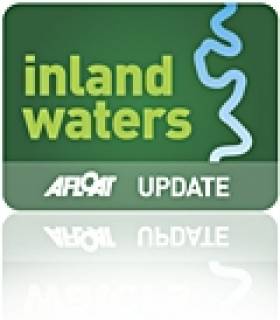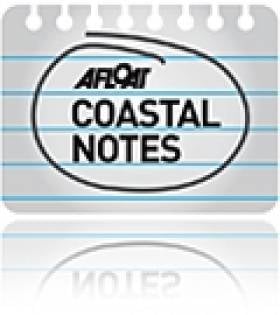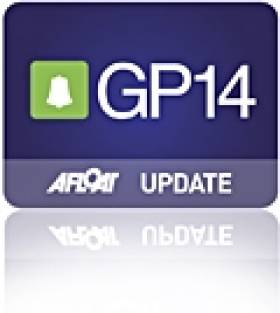Displaying items by tag: Lough foyle
New Search for Lifford Man Feared Drowned After Fleeing Police
A major search operation will today get under way in the Strabane area to find missing man David Calhoun, the Belfast Telegraph reports.
The 22-year-old is feared drowned after fleeing from police in the direction of the River Mourne in the early hours of Sunday 22 May. He has not been seen since.
Rescue workers and volunteers will today begin searching stretched of the Mourne and Lough Foyle for any trace of Colhoun, from nearby Lifford in Co Donegal.
Joining in the search are relatives of other missing people, such as the sisters of Limerick man Shane Moran, who disappeared near the River Shannon in January 2009.
The Belfast Telegraph has more on the story HERE.
Ireland’s Countdown to Rocket-Ship Launch!
The RLM which stands for "Ridiculously Large Missile" is the second-largest civilian rocket ever launched in Ireland. In fact the organisers have built a larger one called the BFM: that's "Big Fat Missile".
The spectacular event has previously taken place on the last Sunday of each month since April. Today's launch will be the fifth and final blast-off of this year's rocket season.
Returning to earth, the museum located in the old coastguard station overlooks Greencastle harbour, which has one of busiest fishing fleets in Ireland.The maritime museum and its planetarium will also be open today. For summertime opening hours and admission fees information Tel: (074) 9381363 or visit http://www.inishowenmaritime.com/about.shtml
Greencastle is also conveniently connected by a 15-minute car-ferry service across Lough Foyle to Magilligan in Co. Derry. The route is served by the Foyle Venture, for ferry times and fares visit www.loughfoyleferry.com/
New Coastal Canoe Trails for Northern Ireland
This week Northern Ireland welcomes the launch of two new coastal canoe trails.
The new Foyle Canoe Trail stretches for 33 miles from Lifford in Co Donegal to Moville on the Inishowen peninsula at Lough Foyle, passing through Derry on the way, with plenty of wild and official campsites along the route.
Meanwhile, the South East Coast Canoe Trail is a sea kayaker's dream – 50 miles of rocky bays and sandy beaches past the Mourne and Cooley mountain ranges from Strangford village to Newry.
According to OutdoorNI.com, the trails were developed by the Countryside Access and Activities Network (CAAN), the Loughs Agency and Down and Derry District Councils, add to the five inland canoe trails already in place.
CAAN development officer Kathryn Callaghan commented: "Both these trails offer a golden opportunity for us all to explore two picturesque corners of Northern Ireland from a unique perspective.”
Waterproof guides for both trails are available free from from local tourist information centres or online from www.canoeni.com.
The coastal trails are the first of four to be launched in 2011. Later this year the North Coast Canoe Trail will take in the Giant’s Causeway and Carrick-a-rede Rope Bridge, while the East Coast Canoe Trail will pass the renowned Glens of Antrim, Belfast Lough and the Ards peninsula.
Donegal Ferry Services Under Review
The cross-border service is funded by Donegal County Council and Limavady Borough Council. The route in recent years has experienced an unfavourable exchange rate, increased cost of fuel, poor weather, a depressed tourism market sector and notably reduced construction traffic, contributing to a sharp decline in demand. In the current climate the local authorities may find it difficult to provide funding as they scale back on budgets.
Record levels in 2005/2006 saw traffic reach 106,179 vehicles and 302,740 passengers. Such was the success of the service annual subsidies for 2008 and 2009 were not required. According to the latest 12-monthly traffic figures for June 2009-June 2010, vehicle volumes dropped to 52,669 and passengers levels have decreased more than halve to 149,455.
The 10-minute route is operated by the 44-vehicle capacity Foyle Venture which served the Kilimer-Tarbert route for the Shannon Ferry Co. The mid-west estuary ferry was replaced by newbuild Shannon Breeze in 2000 and later sold to Lough Foyle Ferry Co.
When the Lough Foyle route began operations in 2002, the service received a subvention of €108,000 each from the local councils. Over that timeframe, the route has received a total funding of €500,000 from Donegal County Council.
In 2009, the two local authorities agreed to provide a €200,000 subvention, but this runs out in March 2011. An application has also been submitted to the Special EU Programmes Body for funding.
On the west side of the Inishowen Peninsula is the Bunbcrana-Rathmullan service, which is also in doubt if a subsidy from Donegal County Council cannot be maintained. The Lough Swilly route started in 2004 and is served by the 20-vehicle capacity Foyle Rambler, a former German river-ferry. The north-west ferry route takes 25-minutes and recorded 15,000 passengers at its peak.
In busier times, tourists from the North, instead of passing through Derry city, used the 'land-bridge' routes across the Inishowen Peninsula to reach holiday-homes and popular seaside resorts throughout Co. Donegal.
Business as Usual for Corcoran and Brogan in GP Hot Toddy Event
Started in 1982 the season ending Hot Toddy event returned to it's originating Club in Larne on 22/23 October. Twenty two boats took to the water on a damp and overcast day with a Force 3-4 Easterly blowing over the hilly east coast of the lough, constantly varying in strength and direction and providing challenging racing conditions.
It seemed like business as usual for Tim Corcoran and Brendan Brogan, despite having sailed very little since the Irish Champs, as they reeled off three firsts in a row, starting and sailing very consistently. The first race was even more "business as usual" as John and Donal McGuinness took second place with President Richard Street and Dan Crilly third. Things were soon to change when silver fleet sailor (for how much longer?) Nigel Sloan and Michael Cox took second place holding off Norman and Rob Lee, While in the third race Curly Morris sailing with daughter Mel (bit of a comedown after sailing with Ger Owens in the last two events) took second with the rapidly improving Keith Louden and Dessie Hughes third.
Sunday was bright and clear although cool and as the wind backed slowly into a more northerly direction it became a little steadier in strength and direction. In the lightest conditions of the weekend (Force 3) Curly and Mel had another good pin end start but this time held on to lead at the first mark and throughout the race despite a strong challenge from Keith and Dessie who held off Tim and Brendan comfortably.
With the breeze strengthened to Force 3-4, Keith made a perfect pin end start and took a lead they were not to loose, despite strong challenges from both Norman and Rob and Nigel and Michael, the latter pair ultimately taking their second second place of the weekend. This was Keith and Dessie's first race win at a major event and well deserved. As both Keith and Richard have ben trying to "break their duck" by winning a race for a number of years, this was the inspiration Richard and Dan needed to do the same in the final race. With John and Donal in second place and well clear of the rest of the fleet their victory was hard earned with a lot of cover tacking! The Presidential celebrations could be heard all the way down to the leeward mark.
With a third and fifth in the first two races Tim and Brendan didn't need to sail the final race but for the next four boats the minor places were up for grabs. Race officer Richard Doig had reverted to an Olympic style course and with the wind backing steadily to the North the final reach became a bit of a cavalry charge with much tactical sailing. Robert and Ross Gingles managed to hold on to the inside berth at the final mark on Curly and Mel who in turn kept out Keith and Dessie and Alistair Duffin and Paul Whitcombe the latter having a quiet weekend by their standards. Despite slipping to 7th on the last beat this was enough to shade out Norman and Rob on tie break.
In the silver fleet Nigel and Michael's two second place finishes gave them a comfortable lead over Cathal Sheridan and David Lappin, with Steven Preston and Brenda Niblock doing enough to beat clubmates Lawrence Balham and T Brown
Lough Foyle Y.C. could be proud of their weekend as in addition to Keith and Dessie in second and Ken Louden and Ryan Louden also making the top ten. The bronze fleet was a L.F.Y.C. clean sweep! Kevin and J Lynch took the honours from Bill Johnston and James Hockley and Daniel and Gareth Gallagher in third place, with only eight points between the three of them. We look forward to seeing more of these up and coming sailors next year and not just when we go to Lough Foyle for one of our events.
The event marked 50 years of sailing at E.A.B.C. much of it dominated by a very strong GP14 fleet. Curly Morris was not the only sailor participating in the event to have launched their first GP14 fifty years ago – Commodore Paddy Thompson persuaded former N.I. champion Michael Hill to get his series 1 boat Trostan out of the garage and onto the water and revive a host of memories.



























